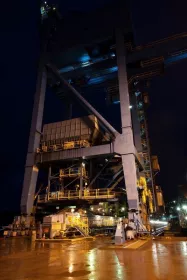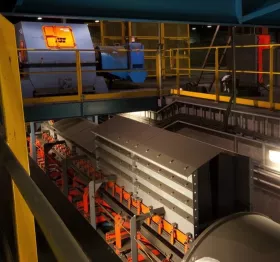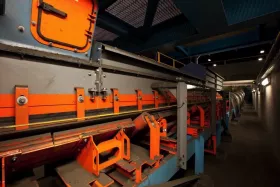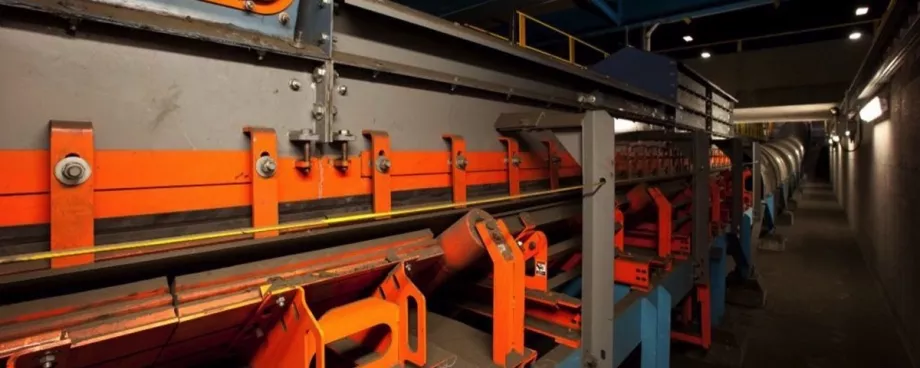
The entire system of chutes and transfers at Kinder Morgan’s North Vancouver (BC), Canada, facility was designed by Martin Engineering, custom engineered and modeled in 3D. These confine the material stream and reduce air entrainment, while directing the material onto the receiving belt with minimal impact to reduce spillage, abrasion, dust and premature wear. This control also helps ensure that material is centre-loaded on the belt, avoiding mis-tracking and fugitive dust. The new transfer points provide the benefits of minimizing aeration and preventing buildup within the chute.
Four of the new transfer points employ a “hood and spoon” transfer, with the hood discharge chute at the top of the system and a spoon receiving chute to place material onto the belt being loaded. These engineered flow chutes employ special geometries that capture and concentrate the material stream as it travels through the chute. The fifth transfer point required a heavy-duty impact area at the bottom of a hopper to handle cargo from two front loaders.
Particular Attention
Environmental stewardship and safety are among Kinder Morgan’s core principles. From the outset, company officials knew that particular attention would be needed on the five conveyor transfers in order to prevent the escape of dust. “When we spent some time reviewing the existing transfer points, it became apparent that there was now better technology available, and we wanted equipment that could elevate the performance and containment to a new level,” said Kinder Morgan Engineering & Project Development Manager Al Price-Stephens.
During initial meetings, the Martin Engineering team introduced a variety of new technologies to improve efficiency and dust containment. To address the site’s specific requirements and design the optimum containment, a site survey was conducted, followed by a conveyor risk assessment. The strategy that emerged gave Martin Engineering responsibility for the design and fabrication of the five transfers, as well as supervising the installation by an outside contractor.
Prime Sources of Dust

Load zones and discharge points are prime sources for the creation and release of airborne dust. The amount of dust created in a transfer point depends on a number of factors, including the nature of the material and the height of the drop onto the belt, as well as the speed and angle of the loading and unloading belts.
The project was kicked off with material testing, because by testing the specific bulk material and applying those properties as the initial step in chute design, a transfer can be developed that maximizes capacity, while minimizing the potential for build-up and fugitive material.
Tailored Chute Design

The new conveyors range from 105 to 709 feet (approx. 32 to 216 meters) in length, and either 42 or 48 inch (106.68 or 122 centimeters) wide. Average speeds range from 177 feet per min ute ( 0.9 meters per second) on the shortest run to 565 feet per minute (2.87 meters per second) on the longest conveyor. Liners were installed on all five transfer chutes to resist abrasion and extend service life.
Summary
Asked to summarize the experience overall, Price-Stephens said, “We were pleased by the level of support that we received from Martin Engineering, without having to hound anyone. And we were impressed by the fact that when we did the initial start-up, it was the guys who helped design the equipment who were there to oversee the start-up.”
“To some extent, 1 think bulk terminals like ours have learned to live with a certain amount of spillage and dust, believing that it’s unavoidable;” he added. “We’ve proven here that isn’t the case. When you look at the components and see what’s been designed for this facility, you realize the concepts and technology are pretty straightforward. It’s really about simple things done well.”
■




















